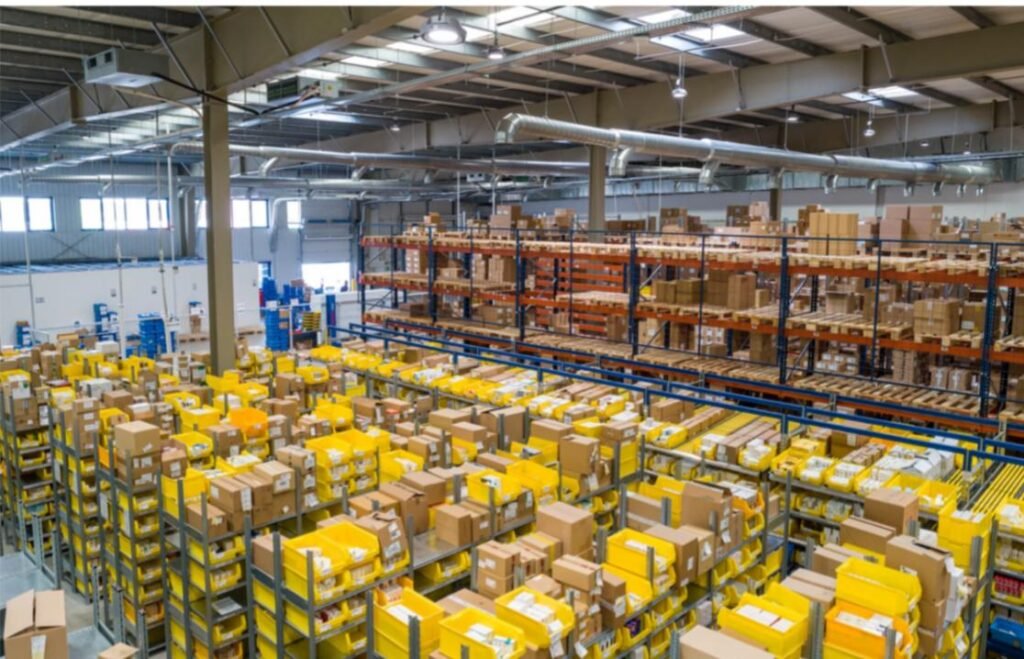n the world of warehousing and logistics, efficiency is key. Choosing the right materials handling system can significantly impact the productivity and profitability of your warehouse operations. Whether you’re running a small storage facility or a large distribution center, finding the ideal materials handling system is crucial. In this article, we’ll explore the factors to consider when selecting a materials handling system that suits your warehouse needs. To learn more about making the right choice for your facility, read on about materials handling systems.
Understanding Materials Handling Systems
Materials handling systems encompass a wide range of equipment and technologies designed to streamline the movement, storage, and retrieval of goods within a warehouse or distribution center. These systems aim to minimize manual labor, reduce operational costs, and optimize space utilization. When choosing the right materials handling system for your warehouse, consider the following factors:
1. Warehouse Layout and Space Constraints
The layout and available space in your warehouse play a crucial role in determining the appropriate materials handling system. For warehouses with limited floor space, vertical storage solutions like automated vertical carousels or mezzanine systems may be the answer. Conversely, larger facilities may benefit from automated conveyor systems or robotic solutions.
2. Types of Products Handled
The nature of the products you handle is a significant factor in materials handling system selection. Fragile, perishable, or high-value items may require specialized systems, such as automated guided vehicles (AGVs) with gentle handling capabilities. Consider the weight, size, and fragility of your products when making your decision.
3. Volume and Throughput
Assess the volume of goods processed through your warehouse daily. High-volume facilities may require automated sortation systems and conveyor belts to maintain a smooth flow of materials. Smaller operations with lower throughput may find that manual handling or simple equipment like pallet jacks suffice.
4. Labor Costs and Workforce Availability
Materials handling systems can help reduce labor costs by automating repetitive tasks. Consider the availability and cost of labor in your region. If labor is expensive and scarce, investing in automation may be a wise choice to increase efficiency and reduce dependency on human resources.
5. Safety Requirements
Safety should always be a top priority in your warehouse. Evaluate the safety features and compliance of materials handling systems. Ensure that any dust collectors you choose not only meet industry safety standards but can also be integrated seamlessly with your warehouse’s existing safety protocols.
6. Integration with Existing Systems
If you already have a warehouse management system (WMS) or other technology in place, compatibility and integration capabilities are essential. The chosen materials handling system should seamlessly work with your existing software and hardware to avoid disruptions in your workflow.
7. Budget Constraints
Your budget plays a significant role in determining the materials handling system that suits your warehouse. While automation can lead to long-term cost savings, it often requires a substantial upfront investment. Carefully analyze your budget and explore financing options if necessary.
Types of materials handling systems
Now that you have an understanding of the key factors to consider, let’s explore some common types of materials handling systems:
1. Conveyor systems
Conveyor systems are widely used in warehouses for their ability to move materials efficiently. They come in various forms, such as roller conveyors, belt conveyors, and gravity conveyors. Conveyors are suitable for both small and large facilities, and they can be customized to accommodate different product sizes and shapes.
2. Automated Guided Vehicles (AGVs)
AGVs are autonomous vehicles that can transport goods within a warehouse without human intervention. They are ideal for large warehouses with high-volume operations. AGVs are versatile and can be programmed to handle various tasks, from transporting pallets to picking items from shelves.
3. Pallet racking systems
Pallet racking systems are designed to maximize vertical storage space and are excellent for warehouses with limited floor space. Selective, drive-in, and push-back racking systems are some common options. These systems allow for efficient storage of palletized goods.
4. Automated storage and Retrieval systems (AS/RS)
AS/RS systems are robotic solutions that automate the storage and retrieval of goods from racks or shelves. They are highly efficient and suitable for warehouses with high-density storage needs. AS/RS can significantly reduce labor costs and increase throughput.
5. Vertical Lift Modules (VLMs)
VLMs are vertical storage systems that use trays or bins to store and retrieve items. They are ideal for small parts and items with varying dimensions. VLMs can save floor space and improve picking accuracy.
6. Mezzanine systems
Mezzanine systems involve the construction of a raised platform within the warehouse, effectively creating additional storage space. These systems are suitable for warehouses with unused vertical space and can be customized to accommodate various storage needs.
Conclusion
Choosing the right materials handling system for your warehouse is a critical decision that can impact your operational efficiency, productivity, and bottom line. Consider factors such as warehouse layout, product types, volume, labor costs, safety requirements, integration capabilities, and budget constraints when making your choice. By carefully assessing your specific needs and researching available options, you can select the materials handling system that aligns perfectly with your warehouse’s goals and objectives. To delve deeper into this topic and explore your options further, read more about materials handling systems and their benefits for your warehouse.
